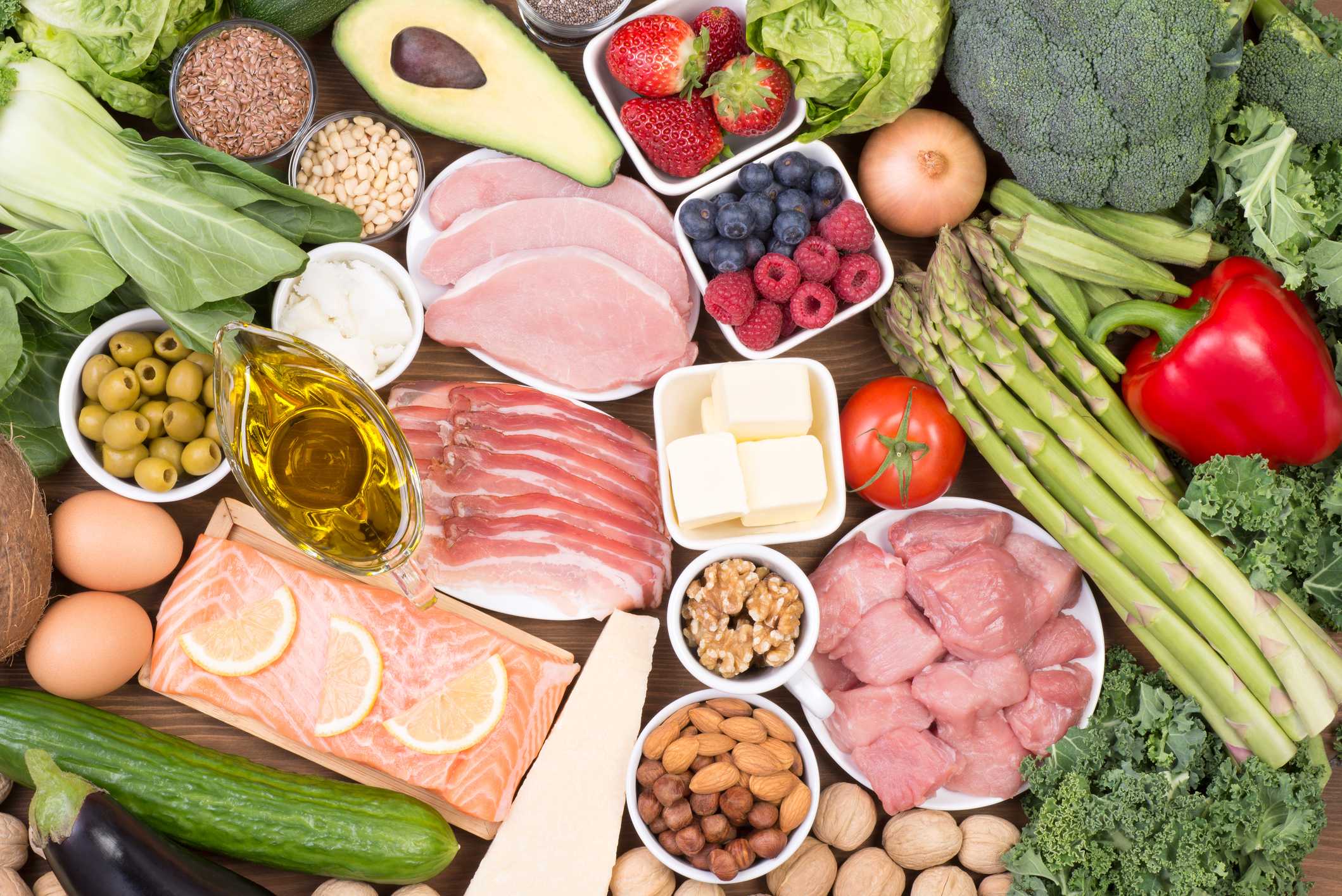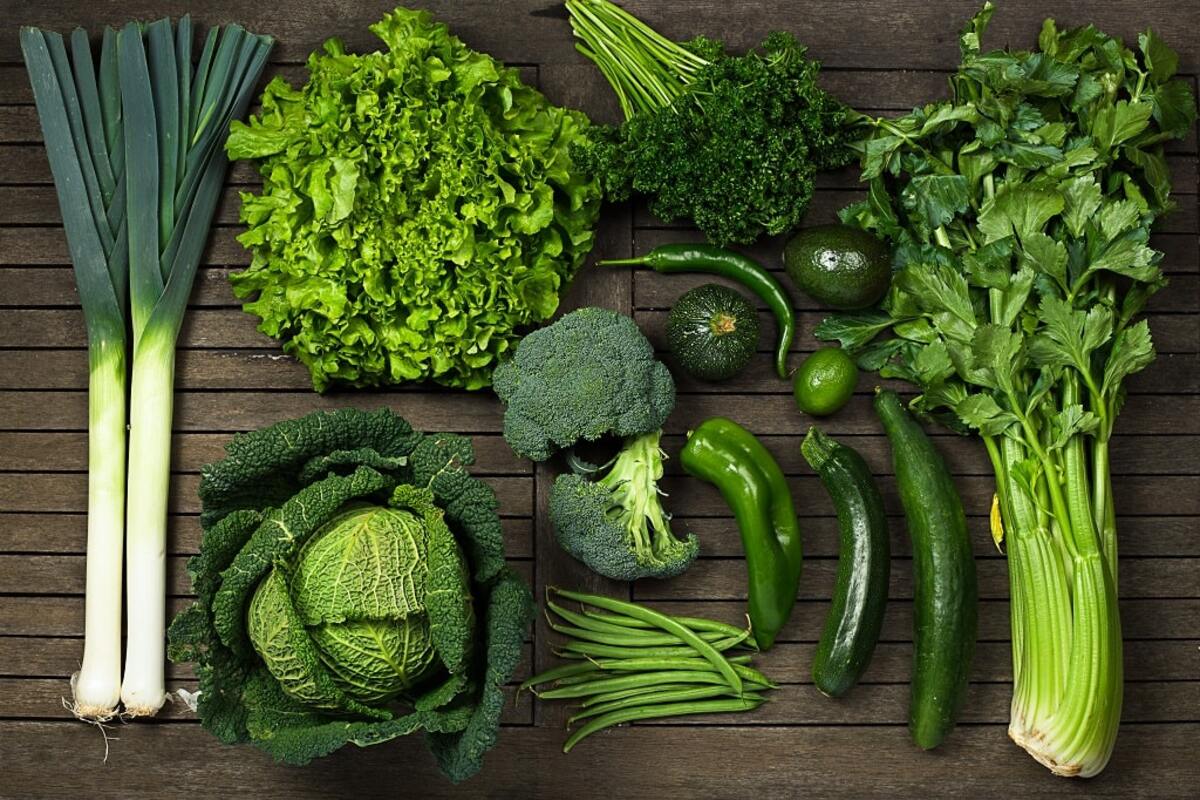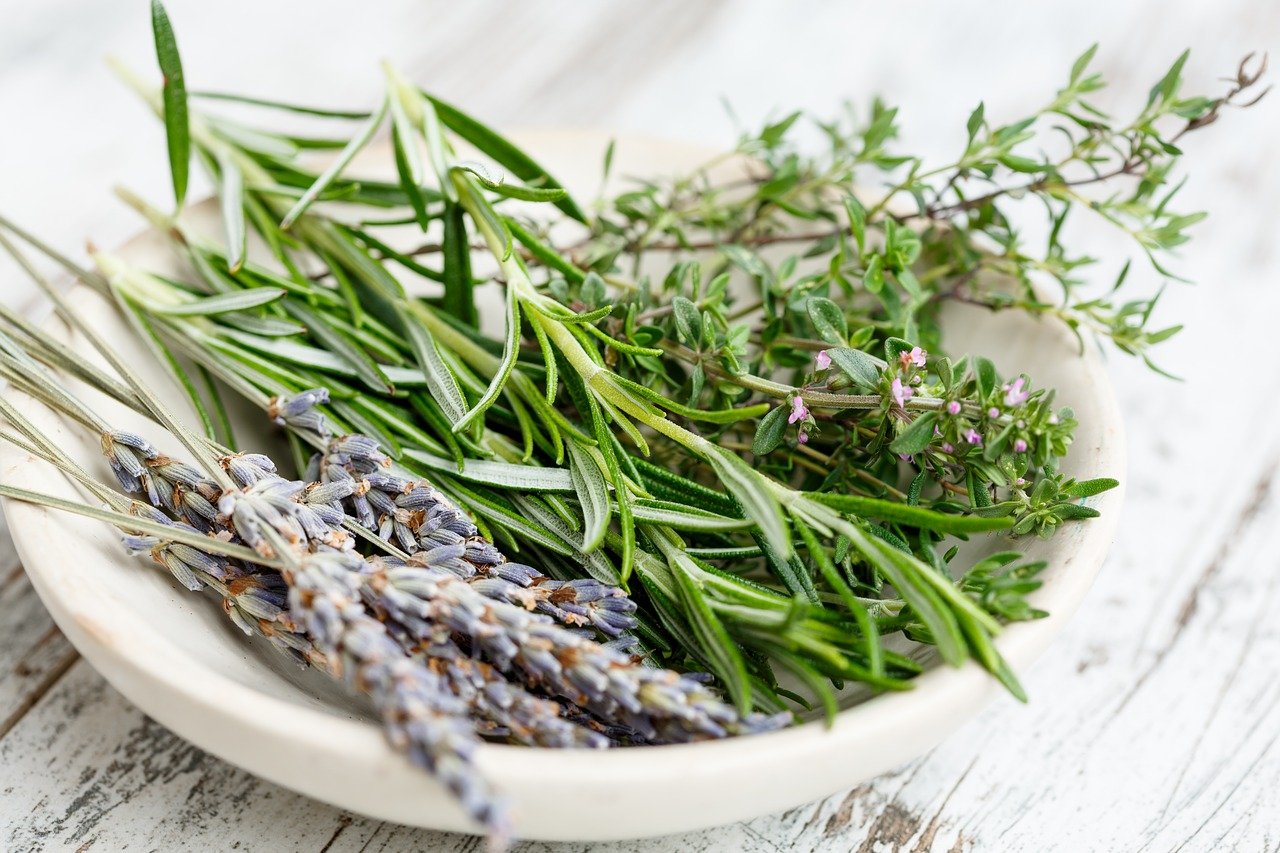Home>Gardening News and Trends>Latest News>What Vegetables Are Good For Diabetics


Latest News
What Vegetables Are Good For Diabetics
Modified: January 22, 2024
Discover the latest news on what vegetables are good for diabetics. Take control of your health and make informed dietary choices to manage diabetes effectively.
(Many of the links in this article redirect to a specific reviewed product. Your purchase of these products through affiliate links helps to generate commission for Chicagolandgardening.com, at no extra cost. Learn more)
Table of Contents
Introduction
Maintaining a healthy diet plays a crucial role in managing diabetes. For individuals with diabetes, choosing the right vegetables can have a significant impact on their blood sugar levels. Vegetables are an excellent source of essential nutrients, fiber, and antioxidants that can contribute to better glucose control and overall well-being.
When it comes to selecting vegetables for diabetics, it’s important to focus on those with a low glycemic index (GI) and high fiber content. Vegetables that have a low GI value are digested more slowly, leading to a slower rise in blood sugar levels. Additionally, the fiber in vegetables helps regulate blood sugar by slowing down the absorption of glucose in the body.
While all vegetables have health benefits, there are certain vegetables that are particularly beneficial for diabetics. These vegetables provide a range of nutrients while helping to keep blood sugar levels stable. In this article, we will explore a variety of vegetables that are not only delicious but also suitable for individuals with diabetes. Incorporating these vegetables into your diet can support your overall health and help you better manage your diabetes.
Importance of Choosing the Right Vegetables for Diabetics
When you have diabetes, making smart food choices is essential for managing your condition effectively. Vegetables are a key component of a well-balanced diet for diabetics. They not only provide essential nutrients but also offer numerous health benefits.
Choosing the right vegetables is crucial for diabetics because it can significantly impact their blood sugar control. Here are some reasons why:
- Low Glycemic Index: Vegetables with a low glycemic index (GI) have a minimal effect on blood sugar levels. These vegetables are broken down and absorbed more slowly, resulting in a gradual rise in blood sugar. This helps prevent blood sugar spikes and promotes stable glucose levels.
- Fiber Content: Fiber is an important nutrient for diabetics as it helps regulate blood sugar levels. Vegetables that are high in fiber can slow down the absorption of glucose, preventing sudden increases in blood sugar. Additionally, fiber promotes satiety and can help with weight management, which is crucial for diabetes control.
- Nutrient Density: Vegetables are packed with essential vitamins and minerals that support overall health. Diabetics often have higher nutrient needs due to the metabolic changes associated with the condition. Incorporating a variety of vegetables into the diet ensures an adequate intake of nutrients necessary for optimal functioning of the body.
- Antioxidants: Many vegetables are rich in antioxidants, which help protect against oxidative stress and inflammation. Diabetes is associated with increased oxidative stress, which can lead to complications over time. Consuming antioxidant-rich vegetables can help mitigate this risk and promote better overall health.
- Weight Management: Obesity is a risk factor for diabetes and can exacerbate the condition. Vegetables, especially non-starchy varieties, are low in calories and can be incorporated into meals in generous portions. Including vegetables as part of a balanced diet can support weight loss or maintenance, which is beneficial for diabetics.
Overall, choosing the right vegetables is crucial for diabetics to improve blood sugar control, manage weight, and reduce the risk of complications. By incorporating a variety of vegetables into your diet, you can boost your nutrient intake, support your overall health, and make managing diabetes more manageable.
List of Recommended Vegetables for Diabetics
When it comes to selecting vegetables for diabetes management, it’s important to focus on those that have a low GI value and are high in fiber. Here is a list of vegetables that are particularly beneficial for individuals with diabetes:
- Leafy Greens: Leafy greens like spinach, kale, collard greens, and Swiss chard are excellent choices for diabetics. They are low in carbs and calories but packed with essential nutrients like vitamin C, vitamin K, and magnesium. These greens have a low GI value and are high in fiber, making them ideal for blood sugar control.
- Cruciferous Vegetables: Broccoli, cauliflower, cabbage, Brussels sprouts, and kale fall under the category of cruciferous vegetables. They are known for their anti-inflammatory properties and are rich in vitamins, minerals, and fiber. These vegetables have a low GI value and are packed with antioxidants that can help reduce the risk of chronic diseases.
- Non-starchy Vegetables: Non-starchy vegetables include cucumbers, zucchini, bell peppers, eggplant, asparagus, and mushrooms. These vegetables are low in carbs and calories while being high in fiber and nutrients. Non-starchy vegetables have minimal impact on blood sugar levels and can be enjoyed in abundance.
- Tomatoes: Tomatoes are a versatile vegetable that can be enjoyed in salads, soups, or sauces. They are a rich source of vitamins A and C, as well as lycopene, an antioxidant with numerous health benefits. Tomatoes have a low GI value and can help regulate blood sugar levels.
- Peppers: Peppers, whether bell peppers or spicy chili peppers, are packed with flavor and nutrition. They are low in carbs, high in fiber, and rich in vitamins A and C. Peppers can add a punch of antioxidants to your meals while keeping your blood sugar in check.
- Garlic and Onions: Garlic and onions not only enhance the flavor of dishes but also provide health benefits. They have anti-inflammatory properties and may assist in regulating blood sugar levels. Incorporating garlic and onions into your meals can add depth and nutrition to your diet.
Remember, variety is key when it comes to vegetable intake. Include a mix of these recommended vegetables in your meals to maximize the nutritional benefits and support your diabetes management goals.
Leafy Greens
Leafy greens are an excellent choice for individuals with diabetes due to their numerous health benefits. These vegetables are low in calories and carbohydrates while being rich in essential nutrients, fiber, and antioxidants.
Some popular leafy greens include spinach, kale, collard greens, and Swiss chard. These vegetables have a low glycemic index (GI), meaning they have a minimal impact on blood sugar levels. They are high in fiber, which helps regulate blood sugar by slowing down the digestion and absorption of carbohydrates.
Leafy greens are also packed with essential vitamins and minerals. They are an excellent source of vitamin C, which is vital for immune function and wound healing. Additionally, they provide vitamin K, which plays a role in blood clotting and bone health. Other nutrients found in leafy greens include vitamin A, vitamin E, magnesium, and folate.
The antioxidants present in leafy greens, such as lutein and zeaxanthin, can help protect against oxidative stress and inflammation, both of which are associated with diabetes complications. These antioxidants have been shown to promote eye health and reduce the risk of macular degeneration, a common complication of diabetes.
Incorporating leafy greens into your diet is easy. They can be enjoyed raw in salads, added to smoothies, or sautéed as a side dish. Introducing variety in your leafy green choices is also beneficial to ensure a wide range of nutrients.
It is worth noting that individuals taking blood-thinning medications, such as warfarin, should consult with their healthcare provider about their leafy green intake, as these vegetables contain vitamin K, which can interfere with the effectiveness of the medication.
Overall, leafy greens are a fantastic addition to a diabetic’s diet. They are low in carbs, high in fiber, and provide an array of essential nutrients and antioxidants. Incorporating leafy greens into your meals can support better blood sugar control and overall health.
Cruciferous Vegetables
Cruciferous vegetables, including broccoli, cauliflower, cabbage, Brussels sprouts, and kale, are highly recommended for individuals with diabetes due to their exceptional nutritional profile and health benefits.
One of the primary reasons why cruciferous vegetables are beneficial for diabetics is their low glycemic index (GI). These vegetables have minimal impact on blood sugar levels, making them a great choice for maintaining stable glucose control.
Cruciferous vegetables are also rich in fiber, which is important for managing diabetes. The high fiber content aids in slowing down digestion and the release of glucose into the bloodstream, preventing sudden spikes in blood sugar levels.
In addition to being low in carbohydrates and high in fiber, cruciferous vegetables are packed with essential vitamins and minerals. They are an excellent source of vitamin C, which supports immune function and collagen production. These vegetables also provide folate, which is crucial for healthy cells and DNA synthesis.
Cruciferous vegetables are known for their anti-inflammatory properties, thanks to the presence of various antioxidants. These antioxidants, including sulforaphane, may help reduce inflammation and oxidative stress, which are often associated with chronic diseases like diabetes.
Moreover, cruciferous vegetables are rich in glucosinolates – compounds that have shown potential anticancer effects. While more research is needed in this area, incorporating these vegetables into your diet can contribute to overall health and wellness.
There are numerous ways to enjoy cruciferous vegetables. They can be steamed, sautéed, roasted, or added to stir-fries and salads. Experimenting with different cooking methods and flavor combinations can help make these vegetables a delicious and nutritious part of your meals.
It’s important to note that some individuals may experience gas or bloating from consuming cruciferous vegetables. Starting with smaller portions and gradually increasing the amount may help reduce any digestive discomfort.
Incorporating cruciferous vegetables into your diet can provide a range of health benefits and support diabetes management. These nutrient-dense vegetables offer a combination of low GI, high fiber, and antioxidant properties that can contribute to better blood sugar control and overall well-being.
Non-starchy Vegetables
Non-starchy vegetables are a great addition to the diet of individuals with diabetes. These vegetables are low in carbohydrates and calories while being rich in essential nutrients, fiber, and antioxidants.
Some examples of non-starchy vegetables include cucumbers, zucchini, bell peppers, eggplant, asparagus, and mushrooms. These vegetables have a minimal impact on blood sugar levels, making them suitable for maintaining stable glucose control.
Non-starchy vegetables are an excellent source of dietary fiber, which plays a crucial role in diabetes management. Fiber helps slow down the digestion and absorption of carbohydrates, preventing rapid spikes in blood sugar. Additionally, fiber contributes to satiety and can aid in weight management, which is important for individuals with diabetes.
These vegetables are also rich in essential vitamins and minerals. Bell peppers, for example, are high in vitamin C and vitamin A, which support immune function and eye health. Asparagus provides folate and vitamin K, while mushrooms are a good source of B vitamins and selenium. Incorporating a variety of non-starchy vegetables into your diet ensures a diverse range of nutrients.
One advantage of non-starchy vegetables is that they can be enjoyed in generous portions due to their low calorie content. This means you can fill up on these nutrient-dense vegetables without worrying about excessive calories or blood sugar spikes. They can be consumed raw in salads, steamed, roasted, stir-fried, or added to soups or stews.
Non-starchy vegetables also offer an array of antioxidants, which help protect against oxidative stress and inflammation. These antioxidants include flavonoids, carotenoids, and polyphenols, which have been linked to numerous health benefits and a reduced risk of chronic diseases.
It’s important to note that if you are preparing non-starchy vegetables with added sauces or dressings, be mindful of any added sugars or high-calorie ingredients that may affect blood sugar levels.
Incorporating non-starchy vegetables into your meals provides not only essential nutrients and fiber but also a wide range of flavors and textures. These vegetables can support better blood sugar control and overall health, making them an excellent choice for individuals with diabetes.
Tomatoes
Tomatoes are not only delicious and versatile but also a fantastic vegetable choice for individuals with diabetes. These vibrant fruits are packed with nutrients and offer several health benefits.
Tomatoes have a low glycemic index (GI), meaning they have a minor impact on blood sugar levels, making them suitable for maintaining stable glucose control. They are also low in calories and carbohydrates, making them a great addition to a diabetic-friendly diet.
One of the key nutrients found in tomatoes is lycopene, a potent antioxidant that gives tomatoes their red color. Lycopene has been associated with various health benefits, such as reducing the risk of heart disease, certain types of cancer, and age-related macular degeneration.
In addition to lycopene, tomatoes are rich in vitamins A and C. Vitamin A is essential for maintaining healthy vision, while vitamin C supports immune function, collagen synthesis, and wound healing.
Furthermore, tomatoes are a good source of potassium, which is crucial for blood pressure regulation and heart health. Including tomatoes in your diet can help support cardiovascular health, an important consideration for individuals with diabetes who are at higher risk for heart disease.
Tomatoes can be enjoyed in various ways. They can be used in salads, sauces, soups, or salsas, or simply eaten fresh as a snack. Cooking tomatoes actually increases the lycopene content, making it more bioavailable to the body.
It’s important to note that some individuals may have sensitivities or allergies to tomatoes. If you experience any adverse reactions, it’s best to consult with a healthcare professional for guidance.
Overall, tomatoes are a delicious and nutritious vegetable choice for individuals with diabetes. Their low GI value, antioxidant content, and various health benefits make them an excellent addition to a well-balanced diet.
Peppers
Peppers, both sweet bell peppers and spicy chili peppers, are flavorful and versatile vegetables that offer numerous health benefits for individuals with diabetes.
Peppers are low in carbohydrates and calories, making them an ideal choice for those looking to manage their blood sugar levels. They have a low glycemic index (GI), meaning they have minimal impact on blood sugar, making them suitable for maintaining stable glucose control.
These vibrant vegetables are rich in vitamins and minerals. Bell peppers, for example, are excellent sources of vitamin C, which is crucial for immune function and collagen production. They also provide vitamin A, which promotes healthy vision and skin. Chili peppers contain capsaicin, a compound that gives them their spicy heat and has been shown to have anti-inflammatory and pain-relieving properties.
In addition to vitamins, peppers are packed with antioxidants. The colorful pigments found in peppers, such as beta-carotene and lutein, act as powerful antioxidants that help protect against oxidative stress and inflammation. These antioxidants play a role in reducing the risk of chronic diseases, including heart disease and certain types of cancer.
Peppers also provide dietary fiber, which is important for managing diabetes. Fiber aids in digestion, slows down the absorption of glucose into the bloodstream, and promotes a feeling of fullness.
As a versatile vegetable, peppers can be enjoyed in various ways. They can be consumed raw in salads, roasted, grilled, sautéed, or stuffed. They can also be added to soups, stir-fries, or dips. Experimenting with different varieties of peppers can add a range of flavors and heat levels to your meals.
It’s important to note that individuals with gastroesophageal reflux disease (GERD) or digestive issues may experience discomfort from consuming spicy chili peppers. Moderation and listening to your body’s response are key in determining the appropriate intake for your individual needs.
Incorporating peppers into your diet not only adds flavor and vibrant colors to your meals but also provides a range of health benefits. Their low GI value, antioxidant content, and nutrient density make them an excellent choice for individuals with diabetes.
Garlic and Onions
Garlic and onions are not only staples in culinary dishes but also offer several health benefits, making them a fantastic addition to the diet of individuals with diabetes.
Both garlic and onions possess unique flavors that can enhance the taste of various dishes. However, their benefits extend beyond their taste.
Garlic has been recognized for its potential health-promoting properties. It contains a compound called allicin, which has been shown to have anti-inflammatory and antioxidant effects. Additionally, garlic has been linked to improved blood sugar control by increasing insulin sensitivity and reducing insulin resistance.
Onions, on the other hand, contain a flavonoid called quercetin, which has antioxidant and anti-inflammatory properties. Quercetin has been associated with improving heart health and reducing the risk of certain chronic diseases, including diabetes.
Both garlic and onions are low in calories and carbohydrates, making them suitable for individuals with diabetes who need to manage their blood sugar levels. They also provide small amounts of fiber, vitamins, and minerals.
Garlic and onions can be easily incorporated into a variety of dishes. They can be added to stir-fries, soups, sauces, and roasted vegetables to enhance the flavor profile. They can also be used in marinades or dressings. Including these ingredients in your cooking not only adds depth and complexity to your meals but also provides potential health benefits.
It’s important to note that the potential blood-thinning properties of garlic and onions may interact with certain medications, such as blood thinners. If you are taking any medications, it is best to consult with your healthcare provider before making significant changes to your diet.
Incorporating garlic and onions into your meals not only adds delicious flavors but also provides potential health benefits. Their ability to improve blood sugar control and offer anti-inflammatory and antioxidant properties makes them valuable additions to a diabetic-friendly diet.
Conclusion
Choosing the right vegetables is essential for individuals with diabetes as part of an overall healthy diet. The recommended vegetables, such as leafy greens, cruciferous vegetables, non-starchy vegetables, tomatoes, peppers, garlic, and onions, provide a wide array of nutrients, fiber, and antioxidants that can support blood sugar control and improve overall health.
Leafy greens like spinach and kale are low in calories and carbohydrates, high in fiber, and rich in vitamins and minerals. Cruciferous vegetables, such as broccoli and cabbage, offer anti-inflammatory benefits and are packed with essential nutrients.
Non-starchy vegetables like bell peppers and cucumbers are low in carbs, high in fiber, and provide a variety of vitamins and minerals. Tomatoes, with their low GI value and rich antioxidant content, are a versatile addition to any meal.
Peppers add flavor, vitamins, and antioxidants to dishes while being low in carbs and calories. Garlic and onions offer unique flavors and potential health benefits, including anti-inflammatory and blood sugar-regulating properties.
Incorporating these vegetables into your diet can help manage blood sugar levels, reduce inflammation, and lower the risk of chronic diseases associated with diabetes. Whether enjoyed raw, cooked, or incorporated into various recipes, these vegetables offer a wide range of flavors and culinary possibilities.
Remember to consult with a healthcare professional or registered dietitian before making any significant changes to your diet, especially if you have any specific dietary restrictions or considerations.
Embracing a diet rich in these recommended vegetables not only supports diabetes management but also contributes to overall well-being. By making smart vegetable choices, you can enjoy delicious and nutritious meals while taking control of your health.










